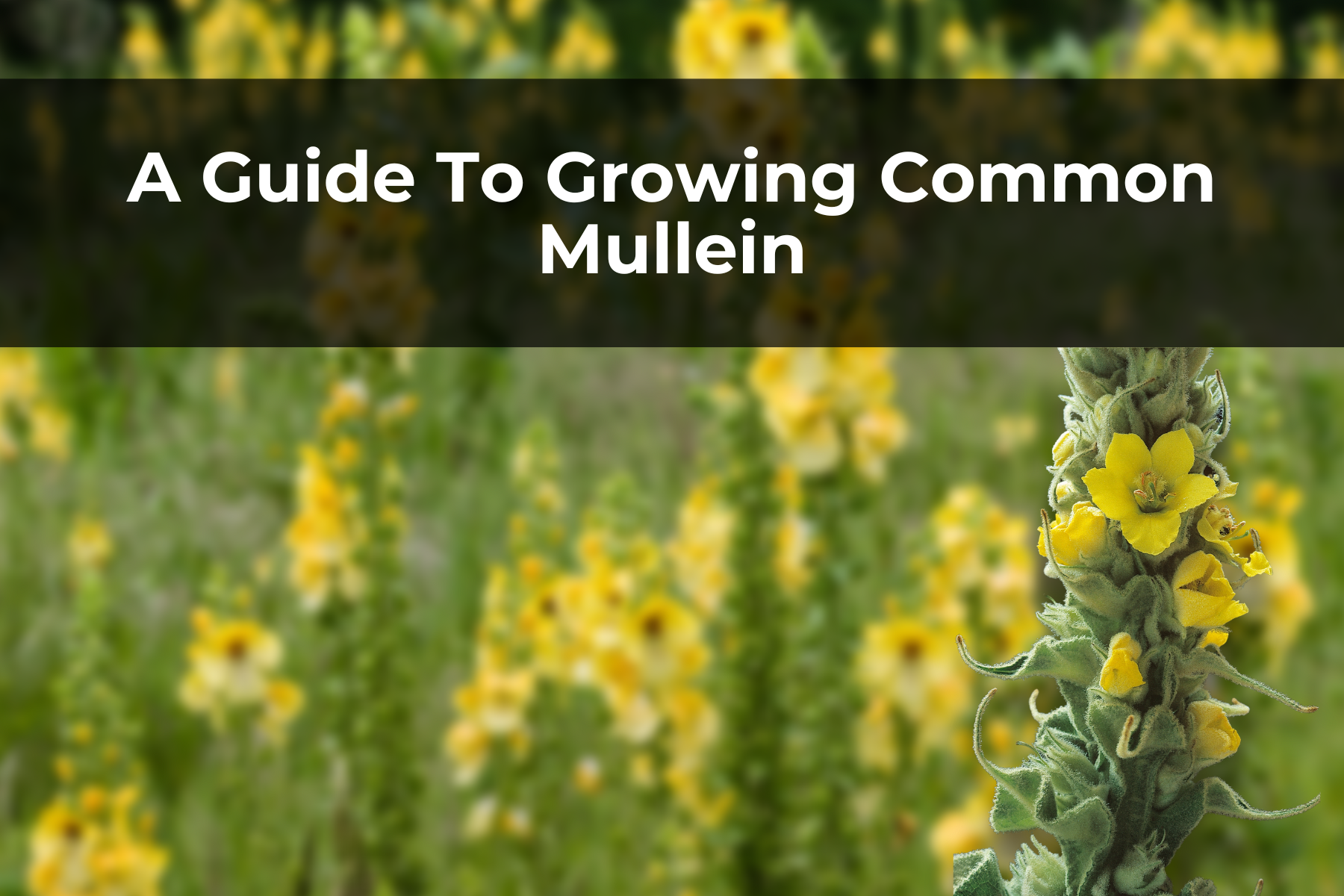Last Updated on June 12, 2023 by Real Men Sow
Common mullein (Verbascum tabasus) can be found in neglected pastures and meadows. It grows along fence rows, along the sides of roads, at the edges of forests, and in areas that are vacant or industrial. The first year is when the plants reach the ground and bear rosettes of hairy foliage. Each soft leaf is gray-green, lanceolate to oblong in color, and measures between 4 to 12 inches in length and 1 to 5 inches wide. This herbaceous perennial or biennial is short-lived and has a deep taproot. Vernalization is a process that exposes the plant to cold temperatures so it can come back to flower in its second year.
The flower stalks can grow up to 7 feet tall and bear small yellow (rarely white) five-petaled flowers. They are grouped together on a single leafy spike. They bloom in small numbers from June through September and mature in spirals from the base to the top of their spikes. This plant is unique because of its soft, felt-like leaves. Each bloom opens before sunrise and closes mid-afternoon. Flowers attract butterflies, flies, and other insects, including short- and long-tongued honeybees and bees.
Practical Uses of Common Mullein
Dry flower spikes dipped into suet or butter make torches. This was as far back as the Romans. Later, the Greeks and other cultures used the leaves to make lamp wicks. The down from the leaves was excellent for tinder, so it was also used by others. Quaker women who couldn’t use cosmetics were told to rub the leaves onto their cheeks to make them look like rouge. Although the effect would last a while, it was quickly overshadowed by the irritation caused by the barbed hairs of the leaves. The leaves can be extracted from the pigment and added to sulfuric acid. This is not a homemade recipe.
Medicinal Uses of Common Mullein
The flowers and leaves are used medicinally. The leaves contain large amounts of mucilage, which can create a demulcent. This is a substance that softens the mucous membranes and has emollient as well as astringent properties. Infusions and decoctions were used to relieve coughs, especially the hacking cough from consumption; to alleviate the pain of hemorrhoids, and to treat diarrhea.
Propagating Common Mullein
Mullein can be grown from cuttings and seeds. You can either buy seeds or gather seeds from plants right away after the fruit is borne from the flowers.
Growing Common Mullein From Seed
A mullein plant’s fruit is a small, round capsule that splits into two. The soil can keep seeds viable and alive for many decades. The soil should be at the surface of the seeds so that they can germinate. The more soil is disturbed, the more seeds are likely to sprout. These plants can be found in poor soils that have been disturbed by fire, logging, or storms.
The plant is drought-tolerant and a prolific seed producer. Plant seeds indoors or outdoors in the spring. Sprinkle them on top of well-drained soil, or scatter them in a few seeds. Two weeks later, look for sprouts. After they have established a full set of leaves, you can divide them and transfer them to a larger container. Mullein plants are easy to self-sow so remove any unwanted plants.
Toxicity
There is nothing to be afraid of because the whole plant has slightly narcotic qualities. However, the short hooks at the stem and leaf can pose a problem if you don’t take precautions.
General Care Guide for Common Mullein
Light
Mullein thrives when it is full sun. To protect them from the wind, plant them in a sunny spot that is not too close to walls or large trees.
Soil
Mullein can be grown in almost any soil, but it prefers soil that is slightly alkaline and dry. Mullein will adapt well to poor soils that are calcareous. Because it is so adaptable, the plant can spread quickly and create dense patches faster than native plants.
Watering
Mullein seeds should be grown in moist soil. Although the plant doesn’t require much moisture, it will need more water as it begins to flower.
Fertilizer
A low-release 10-10-10 fertilizer can help Mullein grow faster and produce more flowering plants.
Overwintering
Mullein is also frost-resistant and can withstand temperatures as low as 5 degrees Fahrenheit. Mulch with bark, leaves, and twigs before the frost date to provide additional protection.
Pests and Diseases
Common Mullein is resistant to pests. Aphids are rarely a problem. Mullein should not be planted in densely compacted soil. This can encourage root rot.

